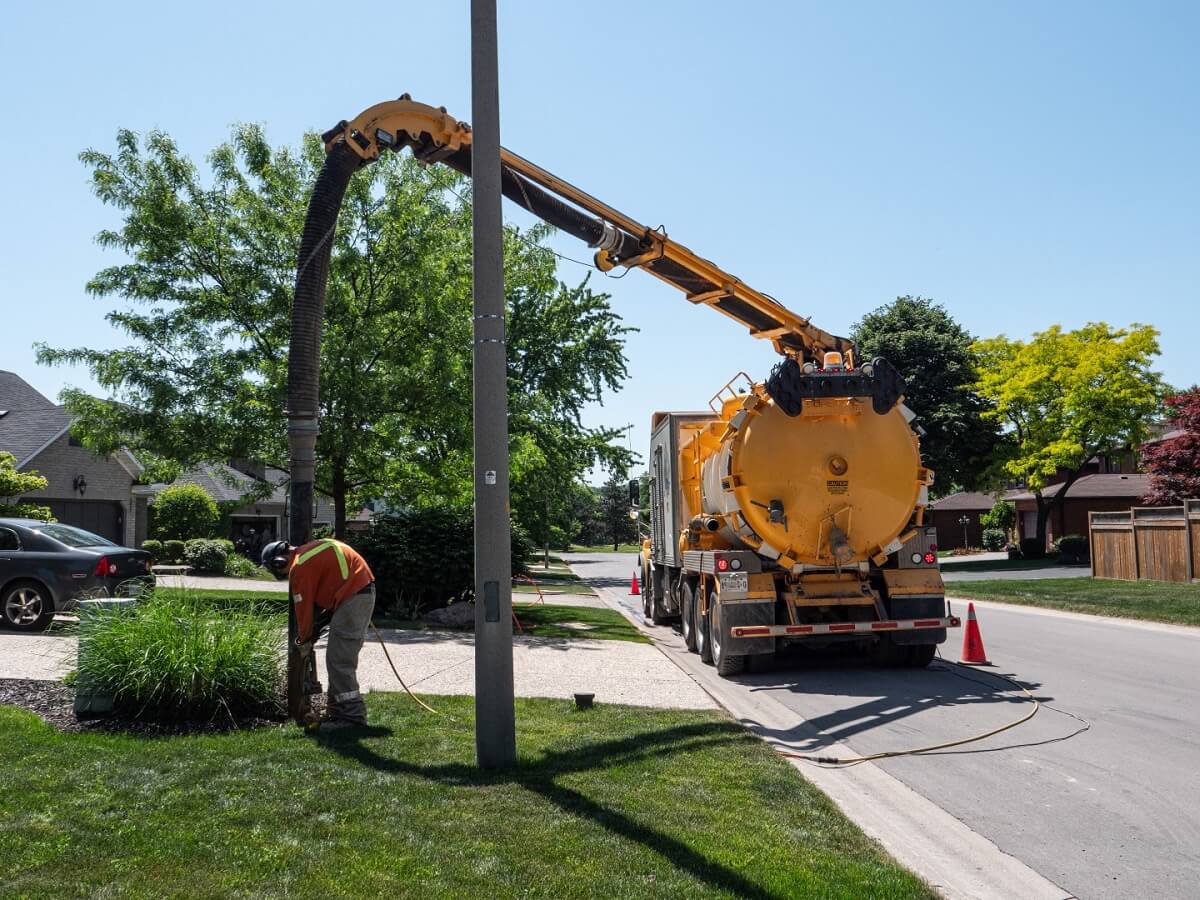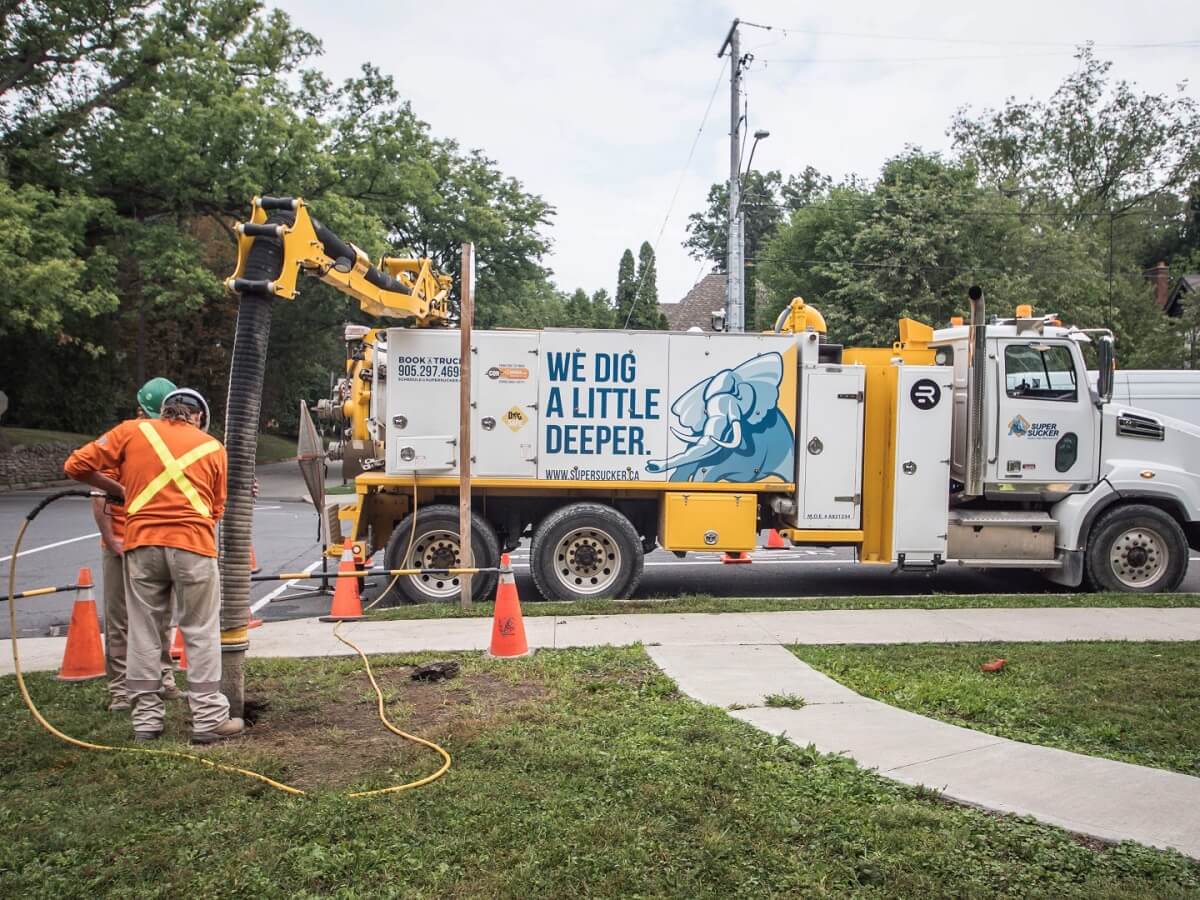Potholing – also known as daylighting excavation – is the process of locating utilities or pipelines (exposing them to daylight) to visually confirm existing infrastructure. In the past, this was done manually with shovels or backhoes, but the process was very slow and generally dangerous as there’s a much higher risk of damaging buried utilities.
Today the process is done safely using vacuum excavation, or non-destructive excavation.
How is potholing done?
Once locates have been completed on ground level, laying out the vicinity of where the underground infrastructure should be, crews will begin digging test holes approximately 6 to 12 inches deep along the locate line. Soil is excavated using a hydrovac or advanced dry suction excavator until the utility’s location can be verified.
Can a digital locator be used instead of potholing?
Although digital locators have become more accurate over the years, there is no replacement for visually identifying where utility lines are before commencing a construction project. The safe zone for contractors can be anywhere from 18 inches to 3 feet from utility lines depending on local regulations. Contractors must dig using a non-destructive method in the vicinity of buried infrastructure and using a shovel is still considered mechanical digging which is against the construction regulations.

Benefits of using hydro excavation for potholing
When damage is caused to utility lines, it is not only dangerous but expensive to repair.
Potholing using hydrovac excavation has several benefits over traditional digging methods, including:
-
It can be done much faster.
Because less effort is required with a hydrovac system, this is a much faster and more efficient way to perform potholing. In fact, potholing via hydrovac excavation is approximately 10 times faster than using shovels.
-
It is safer.
Damaging a hydro or gas line is extremely dangerous. Hydrovac excavation is much less likely than mechanical digging to cause such damage and is, therefore, a much safer method.
-
It can be used for other applications.
In addition to potholing, hydrovac excavation can also be used by utility crews for directional drilling, slot trenching, coring, and subsurface utility engineering. This helps to reduce the overall amount of equipment than is necessary on a job site.
-
It is cost-effective.
Because using hydrovac excavation for potholing is safer, faster, and more precise that other traditional excavation methods, this also makes it more cost-effective than other methods for the entirety of the excavation project.
Benefits of using advanced dry suction excavation (dry vac) for potholing
When using a dry vac for excavation you get all the benefits of using a hydrovac with a few extra perks:
-
It is eco-friendly and clean.
Advanced dry suction excavation is the cleanest and most precise way to remove dirt and debris. It removes considerably less soil than the use of backhoes and other similar machines, meaning that it is less destructive and creates less mess. Your work area will also remain dry and excavated spoils can be reused instead of having to be hauled and disposed of – like you would for hydrovac slurry.
-
Increases project completion times.
When using advanced dry suction excavation your material remains dry and provisions can be made to either store on site or dump right back in the trench when the work is complete. Since the equipment doesn’t have to leave for dumping or refills (like a hydrovac does), it is capable of remaining on site the entire length of the project and even help with reinstatement.
Contact Super Sucker today!
If you are planning a construction project, locating the exact location of utility lines is critical. Contact Super Sucker Hydro Vac Service today for a quote for safe and effective potholing for your project.


